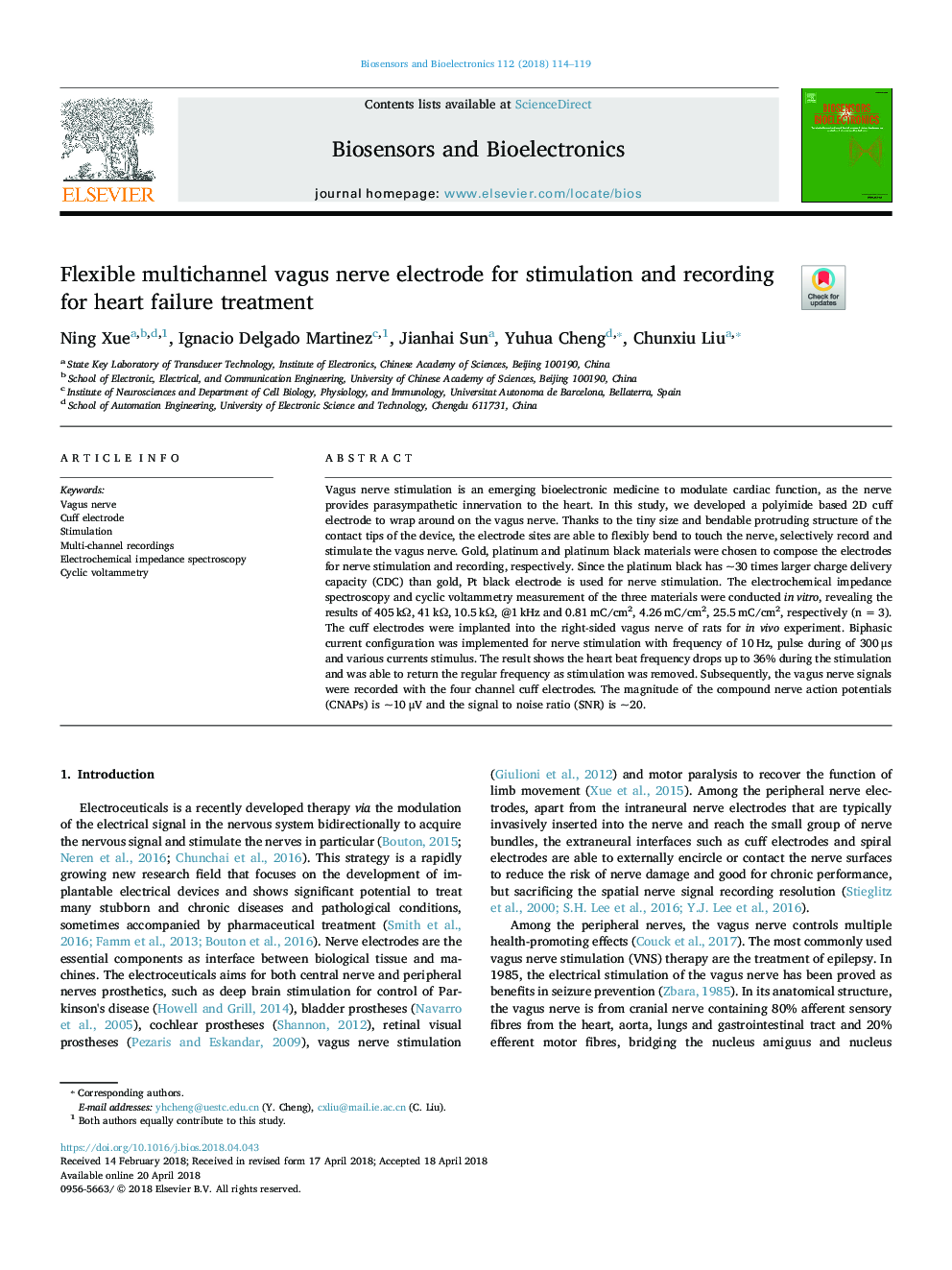| Article ID | Journal | Published Year | Pages | File Type |
|---|---|---|---|---|
| 7229272 | Biosensors and Bioelectronics | 2018 | 6 Pages |
Abstract
Vagus nerve stimulation is an emerging bioelectronic medicine to modulate cardiac function, as the nerve provides parasympathetic innervation to the heart. In this study, we developed a polyimide based 2D cuff electrode to wrap around on the vagus nerve. Thanks to the tiny size and bendable protruding structure of the contact tips of the device, the electrode sites are able to flexibly bend to touch the nerve, selectively record and stimulate the vagus nerve. Gold, platinum and platinum black materials were chosen to compose the electrodes for nerve stimulation and recording, respectively. Since the platinum black has ~30 times larger charge delivery capacity (CDC) than gold, Pt black electrode is used for nerve stimulation. The electrochemical impedance spectroscopy and cyclic voltammetry measurement of the three materials were conducted in vitro, revealing the results of 405â¯kΩ, 41â¯kΩ, 10.5â¯kΩ, @1â¯kHz and 0.81â¯mC/cm2, 4.26â¯mC/cm2, 25.5â¯mC/cm2, respectively (nâ¯=â¯3). The cuff electrodes were implanted into the right-sided vagus nerve of rats for in vivo experiment. Biphasic current configuration was implemented for nerve stimulation with frequency of 10â¯Hz, pulse during of 300â¯Î¼s and various currents stimulus. The result shows the heart beat frequency drops up to 36% during the stimulation and was able to return the regular frequency as stimulation was removed. Subsequently, the vagus nerve signals were recorded with the four channel cuff electrodes. The magnitude of the compound nerve action potentials (CNAPs) is ~10â¯Î¼V and the signal to noise ratio (SNR) is ~20.
Keywords
Related Topics
Physical Sciences and Engineering
Chemistry
Analytical Chemistry
Authors
Ning Xue, Ignacio Delgado Martinez, Jianhai Sun, Yuhua Cheng, Chunxiu Liu,
